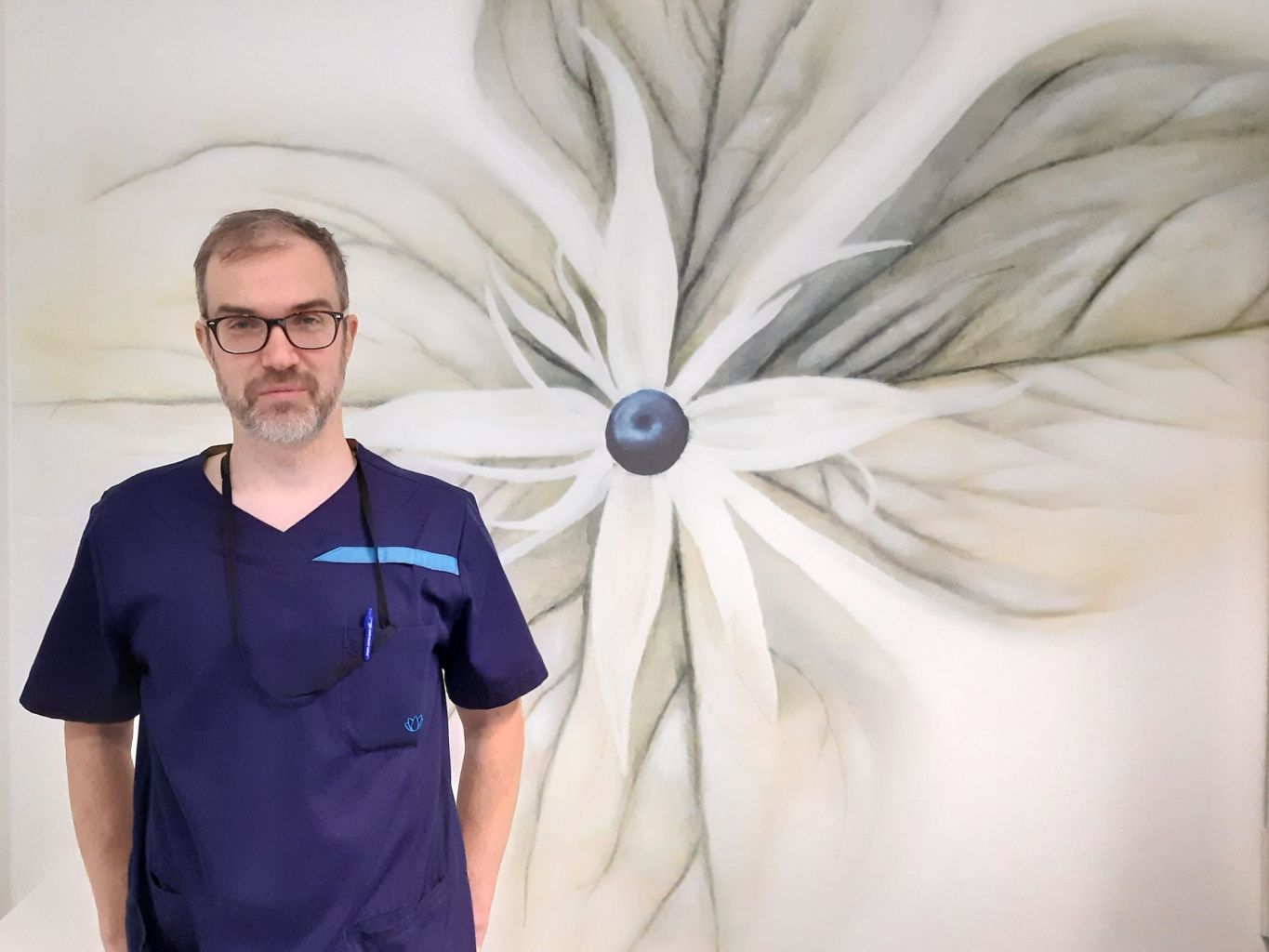03 January 2022
The health and social services reform is a substantial organizational transformation in which IT systems play a key role. The introduction of new comprehensive solutions is not a realistic goal in the first phase of the reform. It is essential to ensure that health and social services professionals have easy and quick access to the information.
“The welfare areas start operating in a little over a year. It's clear that there is not enough time, for example, to implement new customer and patient information systems or provide training about them at the same time when employees and management have to learn a lot of new things”, says Joona Pylkäs, Head of Data and Analytics at TietoEVRY.
The welfare areas to be established with the health and social services reform will be responsible for organizing health and social services in the future. The IT systems used by municipalities and associations of municipalities in a given welfare area will also be under one roof from the beginning of 2023.
Even if the new solution could be taken directly from the shelf as a ready-made package, the implementation would not succeed in this time frame, according to Pylkäs. Typically, in the health and social welfare sector, the acquisition, definition, and deployment processes of systems take years. Therefore, major system reforms are only possible later when the welfare areas are already in operation.
The acute challenge is to bring together information scattered across different systems for professionals to use while concentrating service production in a single organization.
Wide variety of systems
In practice, when the reform enters into force, there may be up to dozens of different systems inherited from municipalities and associations of municipalities in one welfare area.
The challenge is well known in the forthcoming welfare area of Western Uusimaa, says Roope Leppänen, Chief Physician of Espoo Hospital. In Western Uusimaa, ten municipalities with four health care systems and three to four social welfare systems will be merged.
"While the situation is somewhat alleviated by the fact that some of the systems are from the same vendor, the information will still become very fragmented. That poses an extraordinary challenge to practical work."
According to Leppänen, already now in daily patient work, it is easy to have six to seven information windows open for different systems and purposes. Another problem is that data from the Kanta Services, for example, comes out rather slowly.
"Even tens of seconds can feel very long in hectic patient work."
In the big picture, the independent systems of oral health care, secondary care, pathology, and intensive care, among others, add to the complexity.

“Welfare areas can have a number of different and overlapping systems when they start, making information very fragmented. This brings a significant challenge to practical patient work, ”says Roope Leppänen, Chief Physician of Espoo Hospital. (Photo: Espoo Hospital)
Providing the information smoothly to health care professionals
According to Roope Leppänen, more and more different tests and scans are being done in today's health care work. As a result, the amount of technical information related to treatment has increased. In addition, treatment consists of shorter periods and often in different treatment units.
This has led to fragmentation of data when at the same time, more data is accumulating than before. With the health and social services reform, the need to gather information to support daily work is growing even more.
"Tools that can retrieve information from other systems without having to browse for minutes will become necessary before, at some point, we in Western Uusimaa start to consider the unifying of information systems", says Chief Physician Leppänen.
According to Joona Pylkäs, the solution that combines data brings clear benefits.
"For example, TietoEVRY's 360° Patient provides a so-called umbrella solution. From the end user's point of view, it masks the fragmentation of the systems and brings out relevant information quickly, visually, and clearly from different source systems, utilizing the data from both health care and social welfare, when necessary."
The umbrella will also help IT-professionals
When retrieving and presenting information can be brought together, IT or information management will be better able to focus on the changes and improvements in the systems under the umbrella, Pylkäs estimates.
"The umbrella or interface solution enables the flexible renewal of information systems with a less negative impact on production. For example, legacy systems can be run down in a controlled manner while still providing access to their data. Consolidation of systems can also be done in stages."
According to Pylkäs, the additional advantage of TietoEVRY's solution is that the implementation of the system doesn't require further development or procurement into existing systems. A simple integration will be possible instead. The company also has experience doing dozens of similar integrations with systems from several different service providers.
"The entity would suddenly become quite expensive if all source systems required changes or add-ons that would enable data retrieval. In addition, deployment would easily take years if a new version of each source system had to be developed and upgraded to production."

TietoEVRY has already implemented dozens of integrations of its 360° Patient solution with systems from various manufacturers. "From the end user's point of view, our umbrella solution masks the fragmentation of the systems, allowing care professionals to easily and quickly access essential information," says Joona Pylkäs, Head of Data and Analytics at TietoEVRY
Bringing the information together from health care and social welfare
The government's PAPATA project, which aims to identify and anticipate people in need of many services, states that citizens who use a lot of social services also use a considerable amount of health care services on average. It is essential for the well-being of citizens that they receive mutually supportive services from different service areas.
The flow of information between social welfare and health care is essential to produce more effective services and target them at the individual level, says Pylkäs.
According to Roope Leppänen, information is already relatively well available in Western Uusimaa, but the information can be very scattered in many municipalities or associations of municipalities.
"The barrier should be lowered further, and the information should be available, for example, to home care professionals. Even if they are performing a social welfare assignment, they must have easy access to what the doctor has written and vice versa."
The need for information grows, and the ways of using it change
Roope Leppänen estimates that the need for information, especially in the care of an individual patient, continues to grow.
"It is vital that a large amount of data can be handled in a way that is either accessible or manageable by a professional. Alternatively, artificial intelligence must be brought in to filter the most important information for professional use."
According to Leppänen, data could also be used in a larger perspective to find out more complex, broader phenomena, such as the reasons for more frequent home care visits.
"In the current situation, it would be almost necessary to apply for a research permit to solve such a problem."
There is already a system in place in Western Uusimaa that, for example, warns the doctor about a medicine that is unsuitable for a patient. According to Joona Pylkäs, the role of artificial intelligence will increase in any case:
"There is a need for solutions that utilize artificial intelligence. It can analyze the entire history of a citizen's health and social welfare data and support the work of a healthcare professional by highlighting potential risk information and other significant grains of information that influence decision-making."
It’s necessary to take the first step
Joona Pylkäs estimates that the health and social services reform will remain sluggish if not enough attention is paid to the availability of data and the integration of systems.
"Yes, the production of healthcare and social services will be a single entity called the welfare area on paper. But, in reality, professionals and different units will be left to work in silos bounded by information systems, with a very little or nonexistent data flow in between them."
That would mean that the benefits sought by the reform would not be fully realized, according to Pylkäs. Costs related to the systems would also continue to rise, and the burden on social and healthcare professionals would increase when the number of different systems would continue increasing.
Chief Physician Leppänen reminds us that healthcare has come a long way since the time of paper archives, and information systems are already significantly better than before.
However, access to information is the key:
"Scattered information slows down and brings unnecessary insecurity to work when it's difficult to get a holistic picture of a patient's condition. Detective work should not be part of the job description of the medical staff, even after the health and social services reform."